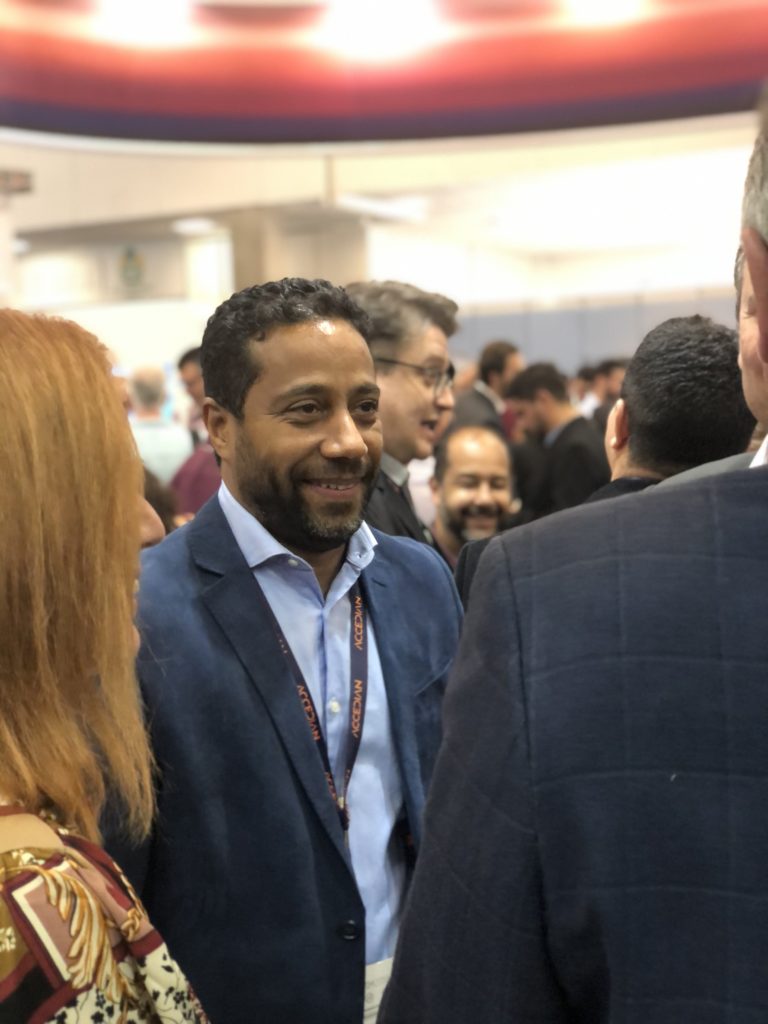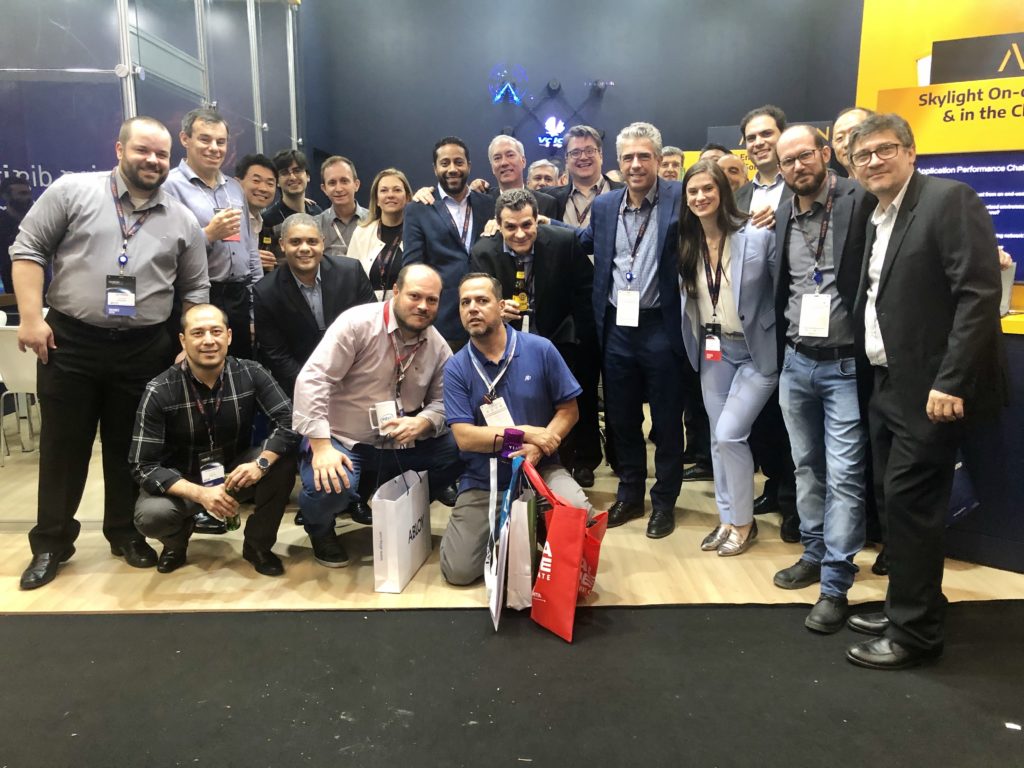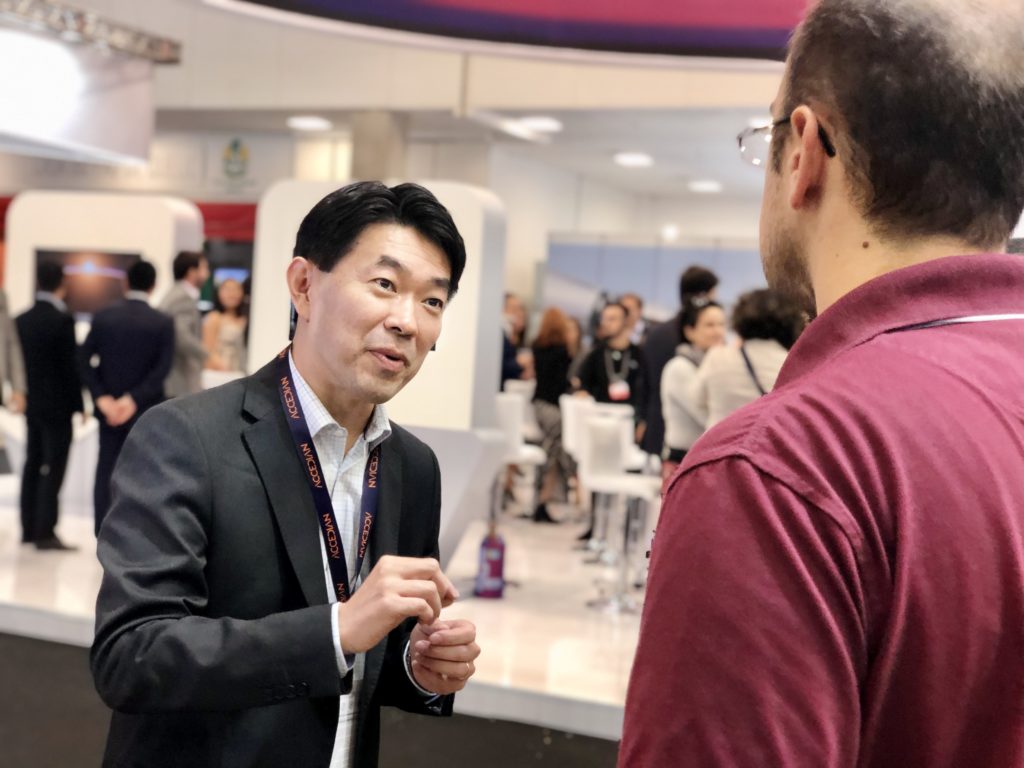A trip to Futurecom 2019 generates not just excellent discussions, but provokes some statistical reflection as well
Arriving in Sao Paulo, Brazil last week for the first time, I was struck by many things – the trees along major roadways, the amount of meat I can consume at a churrascaria, and how extremely pleasant and lively the Brazilians are (although I guess that was no surprise). However, what I found most interesting was the fact that storefronts across the city did not display phone numbers, instead they displayed the well-known WhatsApp icon.

This led me to wonder—at what ARPU do subscribers become totally uninterested in voice calling and switch over to solely rely on third party providers and the divine data? And—just how big of a thing is WhatsApp in Brazil and globally?
Then it also got me thinking, is there a direct correlation between a country’s average wage and WhatsApp usage. According to Digital Information World:
- WhatsApp has 1.5 billion users (as of February 2019) across 180 countries, making it the most popular instant messaging app in the world
- The biggest market for WhatsApp is India with over 200 million users (apparently flexing to 300+ million at times) and Brazil is sitting at 120 million WhatsApp users (more than half (57%) of its almost 212 million citizens)
- The Netherlands has the highest WhatsApp usage at 85% of smartphone users, with the top five markets in Europe… but this is directly related to internet penetration in the country, and an impressive 89% of European households have Internet access.
- Brazil’s household Internet penetration currently sits at 66%, making the size of the possible WhatsApp user base around 140 million. According to these stats, of the available 140 million available users, nearly 90% use WhatsApp, although this article by eMarketer stats that 95% of Internet users in Brazil already in 2015 state that they use WhatsApp and according to the other trends witnessed, that should just be growing!

In Europe, WhatsApp, despite the high penetration, only accounts for 1.7% of the total data usage, according to Sandvine’s 2019 version of their Internet Phenomena Report. How much data usage in Brazil is WhatsApp? This is one thing that I could not find – perhaps an interesting Spotlight for Sandvine’s 2020 edition of the report?
The Internet Phenomena Report only breaks down the global regions as Americas, EMEA and APAC in their Messaging Traffic Share Spotlight this year, but the Americas data usage for WhatsApp is listed as 34.95% downstream and 32.22% upstream messaging traffic – essentially the largest of all regions. I have a sneaking suspicion that this is heavily weighted towards the South American users, based on the lower users stats and penetration in the United States reported by Digital Information World.
Brazil Stats at a Glance
- Population of 212 million with an average annual salary of $9,140 USD (49th on the list)
- Internet penetration of 66%, resulting 140 million potential WhatsApp users
- 120 million WhatsApp users today – 95% of Internet users in Brazil
- ARPU of $5.55 USD monthly, 75% of which, unsurprisingly, is spent on data services
Now to make this really interesting, we could compare to other countries and weigh against their ARPU, average annual salary, and data usage or penetration of WhatsApp, but that is a job better suited to a statistician, or just someone with more competence in Excel. Perhaps you would like me to compare this to your country? Let me know at [email protected]. For now though, I hope you enjoyed this trip down the “WhatsApp stats of Brazil” rabbit hole.
Futurecom 2019 main themes – Internet access for all and 5G planning
Futurecom 2019 – the 21st annual edition – is the biggest comms event in Brazil and Latin America 21st annual edition and this year, they surpassed 30,000 attendees for the first time.

One uplifting panel attended was called “O Papel das Políticas Públicas no fomento ao Desenvolvimento da Conectividade na América Latina” or “The Role of Public Policy in Fostering Connectivity Development in Latin America”. Jorge Fernando Negrete, the President of the Digital Policy Law, moderated the panel featuring Telefónica, Brazil’s Anatel Regulatory Body (MCTIC), Argentina’s Modernization Ministry, and Peru’s Transportation and Communications Ministry. This session covered how to foster innovation across Latin America, how to bolster information security, access and diversity, and how to combat technical inequality.

There was a passionate conversation around the plans of ‘universal internet access’ with an emphasis on the plans for Argentina, Brazil and Mexico. But, the most detailed and advanced program heralds from Peru and is driven by a consortium led by Telefónica and Facebook called Internet para todos Peru (Internet for All Peru). With a very aggressive vision for a broad implementation throughout Latin America, Internet para todos’ charter is to connect more than 100 million people to the Internet.
In the session, it was stated that “digitalization is an important factor of social and economic progress, and mobile broadband can play a key role in reducing the digital divide.” Very bold.
Jose Juan Harro, the Director of LATAM Public Policy and Wholesale Business at Telefónica, said that 20% of the population in the Latin America region today still lacks proper access to mobile broadband. With Internet para todos, Telefónica is expanding connectivity with an ecosystem approach, incorporating a broad range of partners and stakeholders to solve the rural connectivity challenge.
Harro said ”Telefónica is working jointly with Facebook on multiple projects using new technologies and operating models to make mobile broadband deployment more cost-effective. “These projects are already making high-speed mobile internet available to tens of thousands of Peruvians across the highlands and in the Amazonian rainforest. Using an open approach to network deployment, both companies are empowering rural mobile infrastructure operators, local entrepreneurs and communities to collaborate in delivering high-quality connectivity in an efficient and sustainable manner.”
The other focus of the debate were the 5G frequency auctions in Brazil, Peru, Argentina, and other Latin America markets. In Latin America, the deployment of 5G faces several obstacles. At the EU-LAC 2019 Economic Forum, the Director of Public Policies of the Inter-American Association of Telecommunications Companies, Juan Jung, mentioned the main obstacles:
- An already low and declining ARPU ($6 USD) when compared to ARPU in the more developed countries (for example, the United States, with an ARPU of $40 USD)
- Obsolete regulatory frameworks with very complicated and business-limiting laws and regulations
- Restrictions for network deployments primarily due to zoning restrictions
- High prices of the radio spectrum
- A high tax burden for service providers
An exciting upcoming event in the region is the 5G radio spectrum auction. The frequencies in the 3.4 GHz and 600 MHz bands have already been tendered in Mexico who is leading the 5G spectrum charge. The GSMA, an organization that brings together more than 80 mobile telephony operators and 200 companies related to the sector, estimated that Mexico would be the first country in the region with 5G commercial services from Telcel and AT&T.
Brazil plans to tender the radio spectrum in Q2 or Q3 of 2020. Chile announced that it has already begun the process to bid for spectrum in the 700 MHz and 3.5 GHz bands, while in Peru this will be done by 2020.
Although WhatApp and 5G were the focus of this discussion, Futurecom 219 had a variety of very interesting topics covered – all very relevant and associated to cutting-edge technologies, industrial policies, regulatory issues and market demands.
In the technology space, the most popular topics were 5G, SD-WAN, IoT, cloud migration, digital transformation, virtual reality, and machine learning and performance analytics. And we from Accedian were all very happy to see how relevant and crucial our solutions are for the technology innovations and trends above to come to profitable fruition – and to provide nothing less than exceptional Customer Experience for all.
Hope to see you on the upcoming ICT events and again at Futurecom 2020!
Sources:
Digital Information World
Digital News Report
Eurostat
Sandvine 2019 Internet Phenomena Report
Statista
Telefonica’s Internet Para Todos Initiative

 Improved delivery, better visibility: How Accedian and VMware are working together to help CSPs navigate the 5G world
Improved delivery, better visibility: How Accedian and VMware are working together to help CSPs navigate the 5G world
 Adding a new dimension of visibility to the Cisco Full-Stack Observability portfolio with Accedian Skylight
Adding a new dimension of visibility to the Cisco Full-Stack Observability portfolio with Accedian Skylight